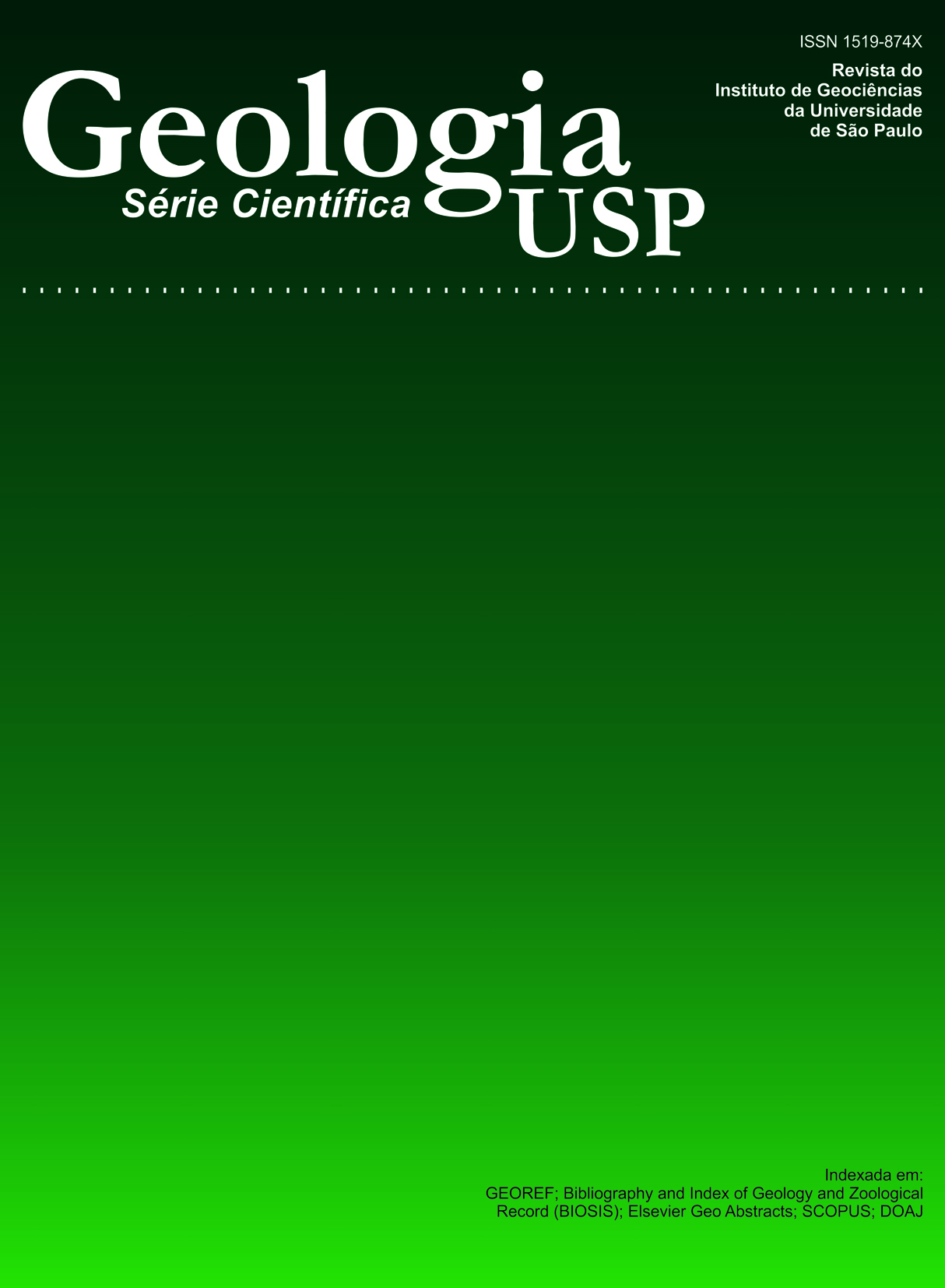Digital terrain analysis and long-term relief evolution of central-eastern Brazil
DOI:
https://doi.org/10.5327/Z1519-874X2012000200009Keywords:
Planation surface, South American planation surface, Geomorphology, Digital Terrain Analysis, Geographic Information SystemsAbstract
Geomorphological theories for long-term relief evolution postulate the existence of planation surfaces, created by the continuous work of erosion/deposition during periods of tectonic quiescence and recognized as extensive areas of very gentle relief disturbed only locally by residual elevations, or by the apparent leveling of summit heights in a given region. After decades since the publication of the main theories on landform evolution, the validity of these models is still an open discussion. In this paper, we present studies about the compartmentalization of landform elements, on a regional-scale basis, of central-eastern Brazil. The methods involved Digital Terrain Analysis in Geographic Information Systems, aiming the extraction and characterization of topographic variables and the compilation and mathematical analysis of geophysical and thermochronological data. Results were interpreted according to the geological context and the theories for long-term relief evolution. The integration of morphometric, thermochronological and geophysical data does not support the validity of using planation surfaces in regional stratigraphic correlations.Downloads
Download data is not yet available.
Downloads
Published
2012-08-01
Issue
Section
Articles
License
Authors who publish in this journal shall comply with the following terms:
- Authors keep their copyright and grant to Geologia USP: Série Científica the right of first publication, with the paper under the Creative Commons BY-NC-SA license (summary of the license: https://creativecommons.org/licenses/by-nc-sa/4.0 | full text of the license: https://creativecommons.org/licenses/by-nc-sa/4.0/legalcode) that allows the non-commercial sharing of the paper and granting the proper copyrights of the first publication in this journal.
- Authors are authorized to take additional contracts separately, for non-exclusive distribution of the version of the paper published in this journal (publish in institutional repository or as a book chapter), granting the proper copyrights of first publication in this journal.
- Authors are allowed and encouraged to publish and distribute their paper online (in institutional repositories or their personal page) at any point before or during the editorial process, since this can generate productive changes as well as increase the impact and citation of the published paper (See The effect of Open Access and downloads on citation impact).
How to Cite
Grohmann, C. H., & Riccomini, C. (2012). Digital terrain analysis and long-term relief evolution of central-eastern Brazil . Geologia USP. Série Científica, 12(2), 129-150. https://doi.org/10.5327/Z1519-874X2012000200009





